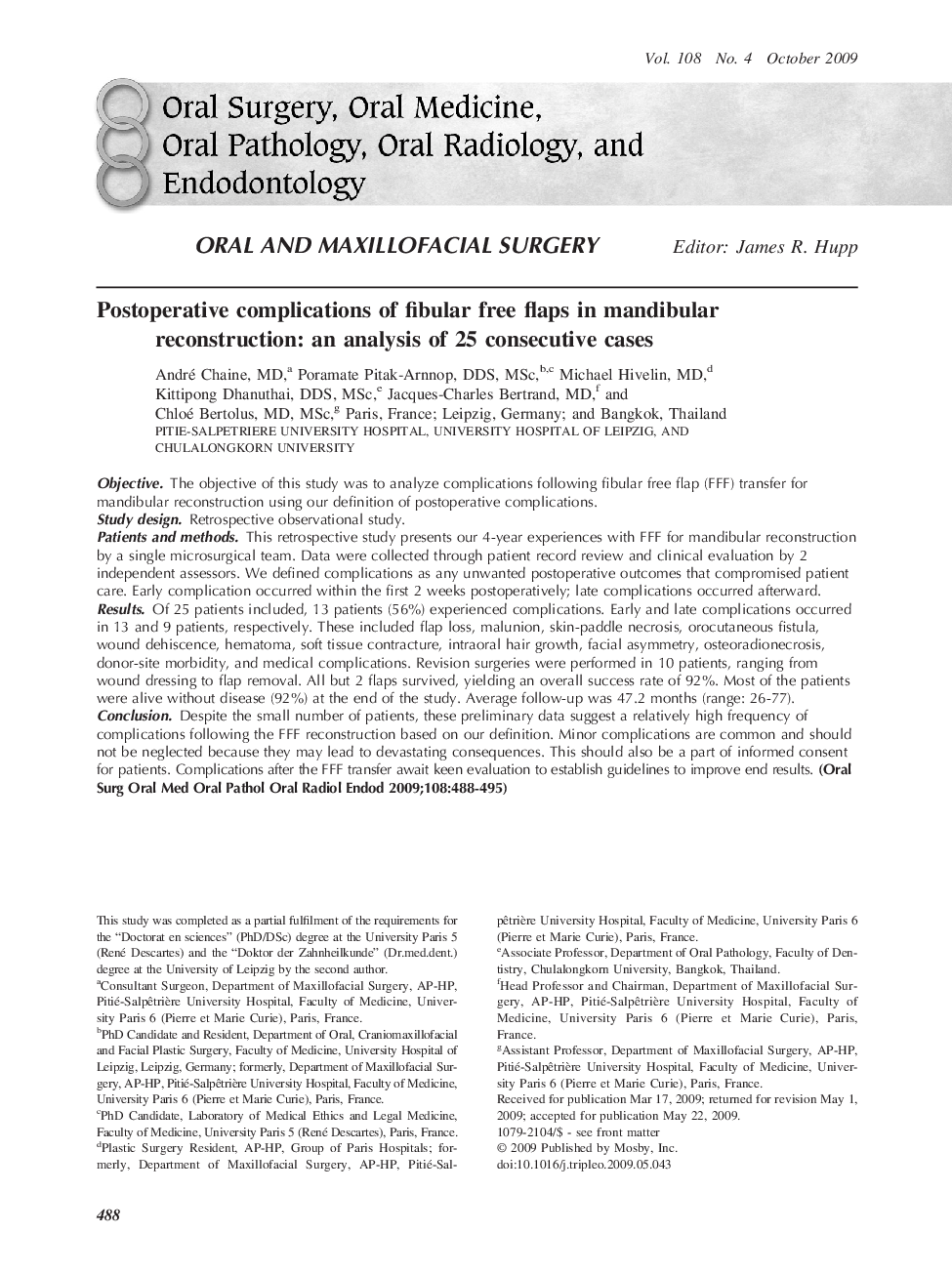| کد مقاله | کد نشریه | سال انتشار | مقاله انگلیسی | نسخه تمام متن |
|---|---|---|---|---|
| 3167879 | 1199386 | 2009 | 8 صفحه PDF | دانلود رایگان |

ObjectiveThe objective of this study was to analyze complications following fibular free flap (FFF) transfer for mandibular reconstruction using our definition of postoperative complications.Study designRetrospective observational study.Patients and methodsThis retrospective study presents our 4-year experiences with FFF for mandibular reconstruction by a single microsurgical team. Data were collected through patient record review and clinical evaluation by 2 independent assessors. We defined complications as any unwanted postoperative outcomes that compromised patient care. Early complication occurred within the first 2 weeks postoperatively; late complications occurred afterward.ResultsOf 25 patients included, 13 patients (56%) experienced complications. Early and late complications occurred in 13 and 9 patients, respectively. These included flap loss, malunion, skin-paddle necrosis, orocutaneous fistula, wound dehiscence, hematoma, soft tissue contracture, intraoral hair growth, facial asymmetry, osteoradionecrosis, donor-site morbidity, and medical complications. Revision surgeries were performed in 10 patients, ranging from wound dressing to flap removal. All but 2 flaps survived, yielding an overall success rate of 92%. Most of the patients were alive without disease (92%) at the end of the study. Average follow-up was 47.2 months (range: 26-77).ConclusionDespite the small number of patients, these preliminary data suggest a relatively high frequency of complications following the FFF reconstruction based on our definition. Minor complications are common and should not be neglected because they may lead to devastating consequences. This should also be a part of informed consent for patients. Complications after the FFF transfer await keen evaluation to establish guidelines to improve end results.
Journal: Oral Surgery, Oral Medicine, Oral Pathology, Oral Radiology, and Endodontology - Volume 108, Issue 4, October 2009, Pages 488–495